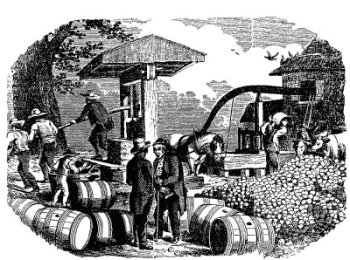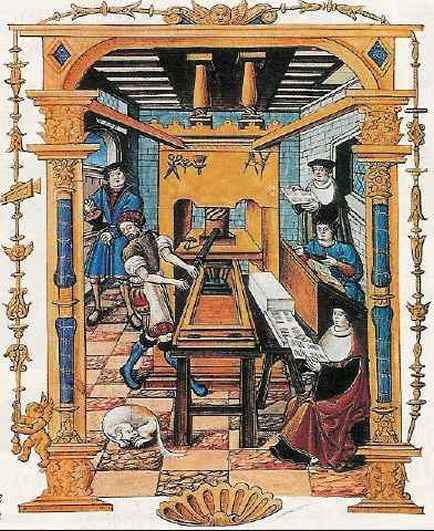

 Many
of the Renaissance printers who played an important role in the
advance of printing were also accomplished musicians, composers
and arrangers, and used the new printing process developed by
Gutenberg and others to publish and distribute music. This was
the first stages of music being made widely available to the public. Many
of the Renaissance printers who played an important role in the
advance of printing were also accomplished musicians, composers
and arrangers, and used the new printing process developed by
Gutenberg and others to publish and distribute music. This was
the first stages of music being made widely available to the public.
The spread of instrumental
and vocal music during the Renaissance was in large part due to
a number of enterprising music printers, many of whom were active
musicians and composers and played a direct role in arranging
the pieces which they published. The most prominent among them
were the Italian Ottaviano Petrucci of Venice, the Parisian Pierre
Attaingnant, the Flemish Teilman Susato and later the Venetian
Antonio Gardano whose sons later went on to form one of most important
music publishing firms of the era.
Petrucci is said
to be the printer who produced the first collection of music using
the new Gutenberg moveable type process. He worked with a process
known as "multiple-impression printing" - one press
run for the lines, another for the notes. This was able to produce
excellent quality and results, but was time consuming. Attaingnant
was responsible for the development and spread of "single-impression
music printing" - printing music from type at one impression
- staves, notes and text together rather than separately, as was
previously the case. This process cut time and costs considerably,
and enabled Attaingnant, and eventually all others, to produce
a wide range of music. This was the beginning of modern music
publishing and printing.
During the early
developments of printing, a large amount of excellent music was
created and printed. On this page, we will present some of this
music. As both printers and musicians, this page is a special
project. We hope you enjoy it.
Now available - 2 MP3 collections of instrumental versions of many of the pieces of the early music printers. See below....
|
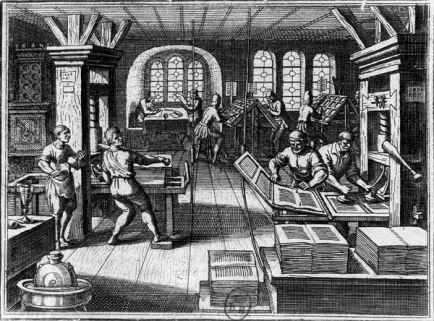 Pierre
Attaignant
(b. c. 1494, Douai?, France d. 1551/52, Paris) was the son-in-law
and heir of the printer-engraver Philippe Pigouchet (fl. 1490-1514).
Beginning with a collection of chansons dated April 4, 1527, he
used movable type and a single impression, a method that was probably
his invention (earlier printers printed the staff and the notes
in separate impressions.) Pierre
Attaignant
(b. c. 1494, Douai?, France d. 1551/52, Paris) was the son-in-law
and heir of the printer-engraver Philippe Pigouchet (fl. 1490-1514).
Beginning with a collection of chansons dated April 4, 1527, he
used movable type and a single impression, a method that was probably
his invention (earlier printers printed the staff and the notes
in separate impressions.)
Before 1527 Attaignant
began using a newly invented moveable music type, in which a fragment
of a musical staff was combined with a note on each piece of type.
He used the new type in a book of chansons, Chansons Nouvelles
(1528). Because Attaignant's single-impression method halved the
time and labor formerly needed to print music, it was quickly
adopted throughout Europe. Attaignant was the first to use the
printing press to achieve mass production in music publishing.
In 1537 he became music printer and bookseller to the French king
Francis I. His printing represents more than 150 outstanding composers
of his day and include chansons, dance collections, masses, motets,
psalms, and Passions. His 111 surviving publications are rich
in information about early 16th-century music.
© 1999-2000
Britannica.com and Encyclopedia Britannica, Inc.
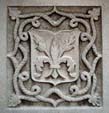 Jacques
Moderne (? - ca. 1561born in Slovenia)
was a music publisher in France, who was very active in Lyons
starting in 1523. His press Jacques
Moderne (? - ca. 1561born in Slovenia)
was a music publisher in France, who was very active in Lyons
starting in 1523. His press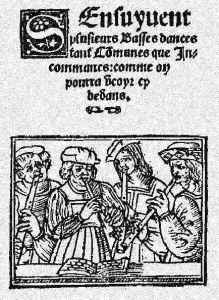 issued publications of many kinds
but concentrated mostly on music starting in 1532. For years he
and Pierre Attaingnant, whose first book came out in 1528, were
the only music publishers active in France. Moderne concentrated
on newly composed music and thus produced the first (and in many
instances only) prints of the approximately 800 pieces he published.
He published works not only by the local circle of composers but
also by the Parisians and major figures like Gombert, Morales
and other papal musicians. His largest series was Le paragon
des chansons (eleven volumes, 1538-43), his most famous together
with Motteti del fiori (four volumes). His publication
Musique de Joye was a collection of ricercars and dance
music. He also published books of motets, chansons, Masses, noëls,
and instrumental music also came from his press. issued publications of many kinds
but concentrated mostly on music starting in 1532. For years he
and Pierre Attaingnant, whose first book came out in 1528, were
the only music publishers active in France. Moderne concentrated
on newly composed music and thus produced the first (and in many
instances only) prints of the approximately 800 pieces he published.
He published works not only by the local circle of composers but
also by the Parisians and major figures like Gombert, Morales
and other papal musicians. His largest series was Le paragon
des chansons (eleven volumes, 1538-43), his most famous together
with Motteti del fiori (four volumes). His publication
Musique de Joye was a collection of ricercars and dance
music. He also published books of motets, chansons, Masses, noëls,
and instrumental music also came from his press.
Matheo
Pagano (Matthaeus Paganus or Matio Pagan) was an important
publisher in Venice. He was a skilled wood engraver as well as
a publisher and printer. His dated works go back to 1538 and end
in 1562, when he published, to accompany Gastaldi's map of the
world, the text "La Universale descrittione del Mondo, descritta
da Giacomo de' Gastaldi Piamontese. Con gratia et privilegio In
Venetia, per Matthio Pagano in Frezzaria al segno della Fede.
M.D. LXII."
Pagano published and
printed the following "Broadside". As well as the graphics
and woodcuts, there is a song in mensural notation with a 2 part
lute accompaniment in tablature. The text above the lute gives
instructions concerning the tuning of the lute. The text below
the instrument provides details about the tablature
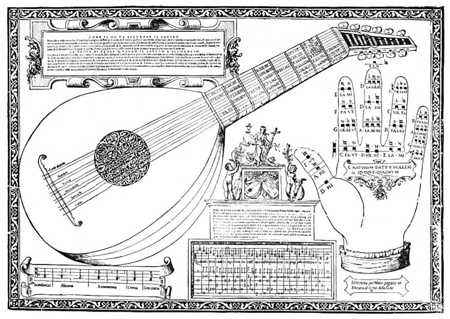

William
Byrd obtained with Thomas Tallis, January 1575,
a patent from Queen Elizabeth for "importation of music from
foreign sources," and printing and selling music and music
paper for twenty-one years. They imported a fount of type from
Johann Petreius of nuemberg and employed Thomas Vautrollier, Blackfriars,
london, to print for them Cantiones, quae ab argumento sacrae
vocantur.....1575. The type then remained unused until after the
death of Vautrollier in 1587, when it passed into the possession
of Thomas East (Este), some of whose imprints describe him as
the assigne of William Byrd. East went on to become Renaissance
England's most productive music printer. Tallis died in November
1585, after which Byrd held the patent alone until its expiration.
 Teilman
Susato, c. 1515-67, began his recorded career as a
performer in the civic ensemble of Antwerp in 1530. Evidently
of German origin, he chose to spend his most productive years
in Antwerp, which in the first half of the sixteenth century was
the dominant commercial center in northern Europe. This restless,
highly gifted musician was not content with a one-dimensional
career. Susato went on to establish himself as a dealer in musical
instruments, as an editor, and as a composer. His skills in music
and business, as well as his drive and ambition, are perhaps most
visible to us now in his activities as a printer of music, for
he founded one of the most productive and highly respected publishing
houses of music of the 16th century. In 1551 Antwerp printer Tielman
Susato began publication of his Musyck boexken, a series
devoted to Dutch-texted polyphonic music. This was the most serious
attempt by a sixteenth-century publisher to popularize the genre. Teilman
Susato, c. 1515-67, began his recorded career as a
performer in the civic ensemble of Antwerp in 1530. Evidently
of German origin, he chose to spend his most productive years
in Antwerp, which in the first half of the sixteenth century was
the dominant commercial center in northern Europe. This restless,
highly gifted musician was not content with a one-dimensional
career. Susato went on to establish himself as a dealer in musical
instruments, as an editor, and as a composer. His skills in music
and business, as well as his drive and ambition, are perhaps most
visible to us now in his activities as a printer of music, for
he founded one of the most productive and highly respected publishing
houses of music of the 16th century. In 1551 Antwerp printer Tielman
Susato began publication of his Musyck boexken, a series
devoted to Dutch-texted polyphonic music. This was the most serious
attempt by a sixteenth-century publisher to popularize the genre.
 Ottaviano
Petrucci was one of the first printers to publish music
using the Gutenberg printing process. Many historians believe
that his first book, Harmonice Musices Odhecaton
(Venice, 1501), is the first music collection printed using
the Gutenberg printing system. Ottaviano
Petrucci was one of the first printers to publish music
using the Gutenberg printing process. Many historians believe
that his first book, Harmonice Musices Odhecaton
(Venice, 1501), is the first music collection printed using
the Gutenberg printing system.
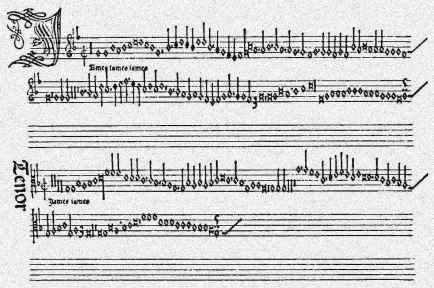
 The
following MP3 file and graphic to the left are from the 16th Century
publication of Renaissance alchemist Michael
Maier's "Atalanta
Fugiens" which was an early example
of multi-media. Atalanta Fugiens contained 50 sections, each made
up of a emblem graphic, a written exposition and a musical composition,
which create a symbolic alchemical publication based on the Greek
myth of Atalanta. The link above will take you to our web page about Atalanta Fugiens. The
following MP3 file and graphic to the left are from the 16th Century
publication of Renaissance alchemist Michael
Maier's "Atalanta
Fugiens" which was an early example
of multi-media. Atalanta Fugiens contained 50 sections, each made
up of a emblem graphic, a written exposition and a musical composition,
which create a symbolic alchemical publication based on the Greek
myth of Atalanta. The link above will take you to our web page about Atalanta Fugiens.
MP3 of our arrangement of the tenth piece
in Atalanta Fugiens
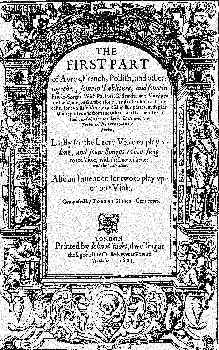
Tobias
Hume was an English violist and composer who was
born around 1569 and he died the 16th of April 1645. He was said
to have been an army officer, a captain, and an excellent performer
on the viola da gamba.
Hume published a
few unique books of music, all made up of his own works, rather
than arrangements or compositions of other musicians and composers.
The following arrangements are from Hume's publications.

A
broadside published in Renaissance England,
complete with music
and lyrics.
|
The Early Music Printers
MP3 collections
Attaignant - Branle MP3 sample
Attaignant - Jan petit Jan Jehan L'Heritier
Attaignant - Magdalena
Attaignant - Tourdion
Attaignant Preludium
Attaignant_Magnificat
Moderne - Branle
Moderne - Pavanne
Petrucci - Ala Audience
Petrucci - Antoine Busnois
Petrucci - Danse
Petrucci - James James James
Petrucci - Johannes Ghiselin Verbonnet, La Spagna
Petrucci - Josquin, Cela sans plus
Petrucci - Josquin, La Bernardina
Petrucci -Anonymous, Dit le Burguygnon
Matheo Pagano - Song
Susato - Das Ganze
Susato - Doulce memoire - MP3 sample
Susato - Een meysken eens voerby passeerde
Susato - J'ay si forte battaille
Susato - Si ton amour
Susato - Pavan
You can download the entire collection of MP3 files listed above in the format of 2 "zip" files for the price of $5.00.
After your Paypal or Credit Card pavement is processed you will quickly receive an email with the download links for the two collections.
Purchase the
Music Of The Early Printers

|
.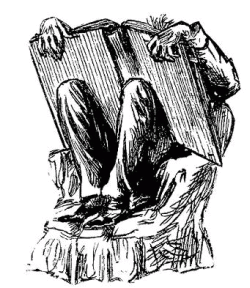
The Cider Press Unique PDF ebook collection for historical researchers,
music history researchers and for the just plain curious folks out there....
|
Explore - The Amaranth Publishing web pages 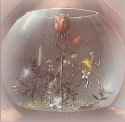 including the music of the spheres, the music of a Renaissance alchemist, music created by software and artificial intelligence, the music of the fairies, the music of the Illuminati, the world's most mysterious book, the world's oldest song, a way you can compose music like Mozart, the world's oldest love song, including the music of the spheres, the music of a Renaissance alchemist, music created by software and artificial intelligence, the music of the fairies, the music of the Illuminati, the world's most mysterious book, the world's oldest song, a way you can compose music like Mozart, the world's oldest love song,
and much more........ |
|


Many of the Renaissance printers who played an important role in the advance of printing were also accomplished musicians, composers and arrangers, and used the new printing process developed by Gutenberg and others to publish and distribute music. This was the first stages of music being made widely available to the public.
including the music of the spheres, the music of a Renaissance alchemist, music created by software and artificial intelligence, the music of the fairies, the music of the Illuminati, the world's most mysterious book, the world's oldest song, a way you can compose music like Mozart, the world's oldest love song,

 issued publications of many kinds
but concentrated mostly on music starting in 1532. For years he
and Pierre Attaingnant, whose first book came out in 1528, were
the only music publishers active in France. Moderne concentrated
on newly composed music and thus produced the first (and in many
instances only) prints of the approximately 800 pieces he published.
He published works not only by the local circle of composers but
also by the Parisians and major figures like Gombert, Morales
and other papal musicians. His largest series was Le paragon
des chansons (eleven volumes, 1538-43), his most famous together
with Motteti del fiori (four volumes). His publication
Musique de Joye was a collection of ricercars and dance
music. He also published books of motets, chansons, Masses, noëls,
and instrumental music also came from his press.
issued publications of many kinds
but concentrated mostly on music starting in 1532. For years he
and Pierre Attaingnant, whose first book came out in 1528, were
the only music publishers active in France. Moderne concentrated
on newly composed music and thus produced the first (and in many
instances only) prints of the approximately 800 pieces he published.
He published works not only by the local circle of composers but
also by the Parisians and major figures like Gombert, Morales
and other papal musicians. His largest series was Le paragon
des chansons (eleven volumes, 1538-43), his most famous together
with Motteti del fiori (four volumes). His publication
Musique de Joye was a collection of ricercars and dance
music. He also published books of motets, chansons, Masses, noëls,
and instrumental music also came from his press.









